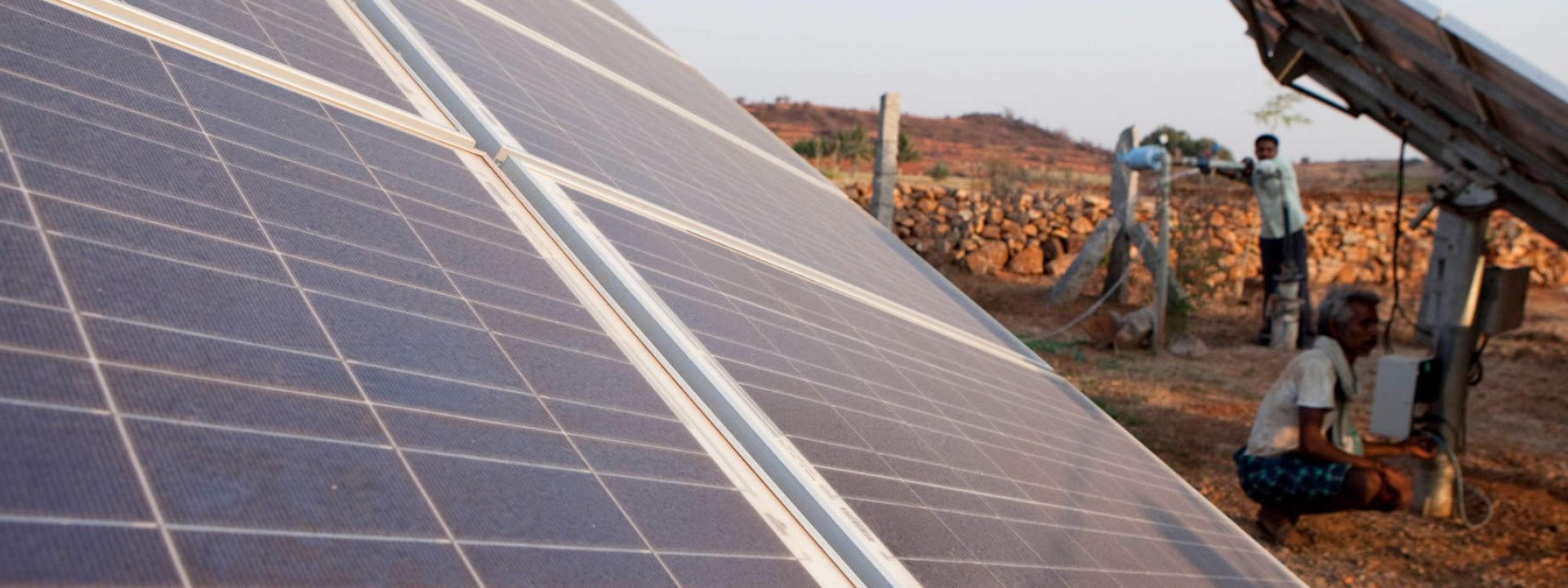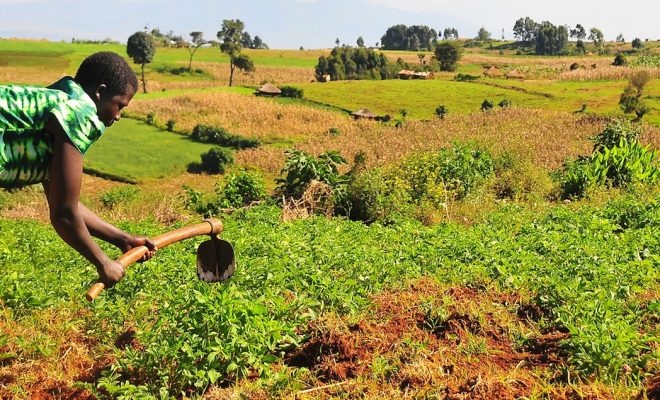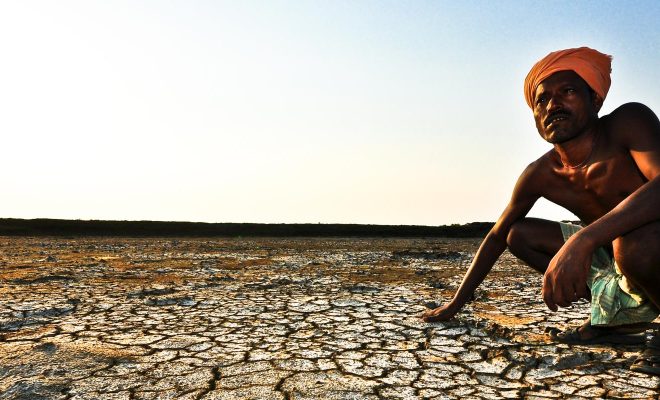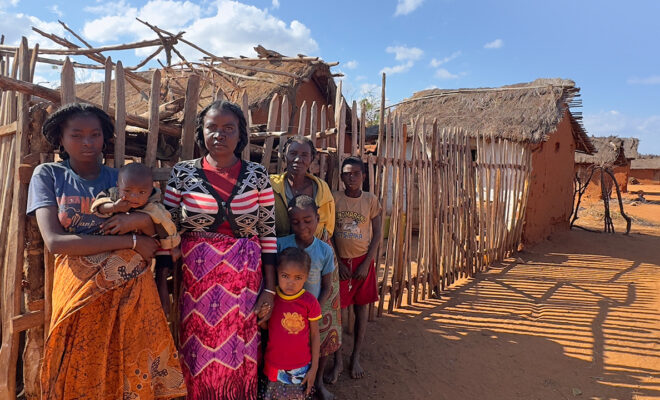The use of solar energy for drip irrigation was promoted for the first time in India in 2005 by the Vicente Ferrer Foundation, thanks to Moncho Ferrer, the son of Vicente Ferrer and current programme director of the Foundation. At that time the use of solar-based electric power for agriculture had already been introduced in India, but it had not been used in drip irrigation. Nowadays, the Indian government is developing a plan to introduce this system all over the country.
India is one of the countries more at risk from climate change; in fact, its consequences have been noticeable for years in the alteration of the monsoon rains. The rains originating in the Southwest of the Indian Ocean that irrigate most of the territory in the summer are becoming increasingly irregular both in their periodicity and quantity. This causes serious damage to farmers, especially in the most arid areas such as the Anantapur and Kurnool regions, where more than 70 % of their inhabitants are farmers that live below the poverty line, and for whom the lack of water is one of the most pressing problems. The migration process of those people with fewer resources from rural areas to large cities is the most important cause of the severe socioeconomic instability the country is facing.
On the other hand, India is located in the so called “sun belt” of the Earth, the geographical area that receives the largest amount of light and heat from the sun; a renewable and clean energy with a very low operating cost that can be managed fairly easily by its users. For this reason, as in many other areas of our planet, solar energy is one of the pillars of sustainable economic development.
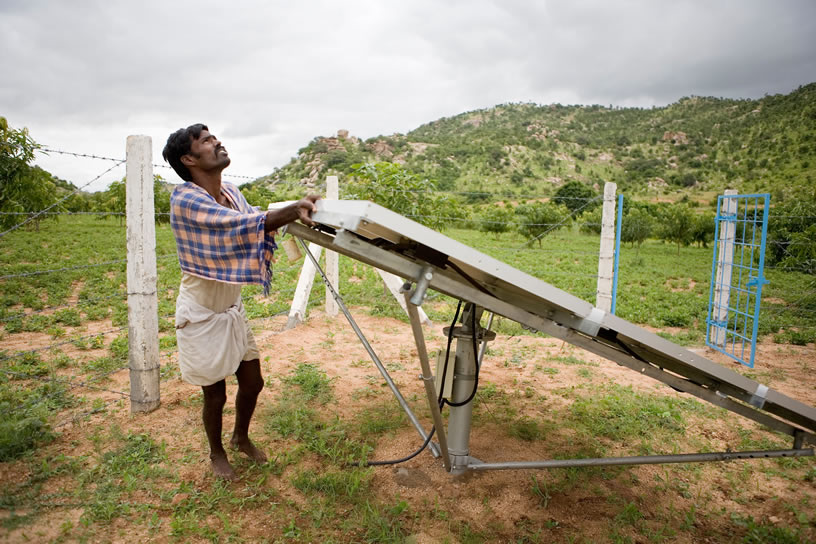
© Albert Uriach / FVF
A simple and efficient system
The system is based on the installation of a suction pump in the water wells, around 50 metres deep. The geologic study prior to drilling is essential to ensure the flow of groundwater to the well. The pump drives the water to the surface, towards an underground pipe that, with the right pressure, distributes it to the small drip irrigation pipes. The electricity that puts the pump in motion is produced by two 900 W photovoltaic panels that are installed near the pump and connected to a DC/AC converter. The system is easy to operate: three times per day, the farmer redirects the panels following the position of the sun to obtain the maximum electrical efficiency. The We Are Water Foundation collaborates with the Vicente Ferrer Foundation in the installation of the panels and the pump, and in the training of the farmers, so that they learn how to operate them.
Drip irrigation allows farmers to provide just the amount of water necessary for every plant, practically with no waste of water due to evaporation and transport, as in the traditional open channels, and reduces the danger of disease and pest transmission. The farmer can also save on fertilizers, as the system allows in certain cases the adaptation of a small tank to dissolve them and other phytosanitary products in specific and controlled quantities, reducing therefore the risk of groundwater pollution.
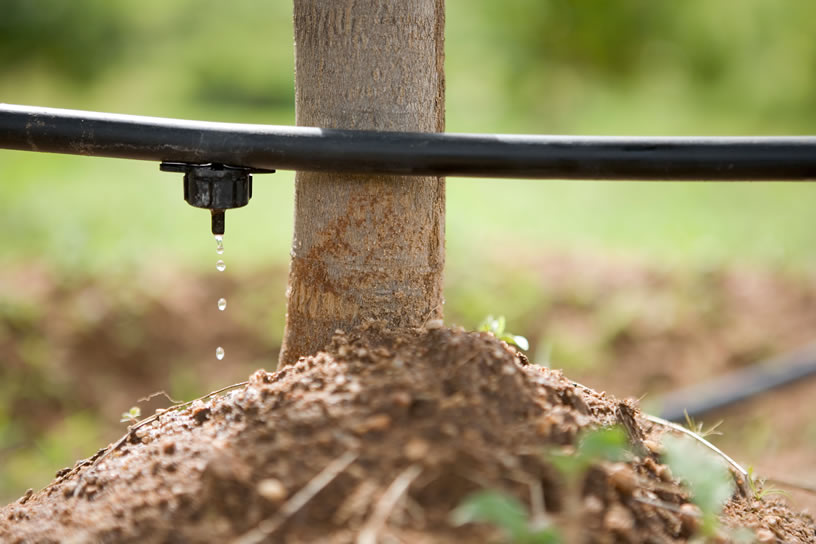
© Albert Uriach / FVF
Sun and water: first opposite then complementary elements
The climatic changes of the solar cycle correspond to the irrigation needs: the greater the sunshine, the greater the need of water for crops, but also the greater the capacity to produce electric power for pumping. In areas such as the Anantapur and Kurnool regions, as well as in many regions in Spain (a geographical area with similar or even higher sunshine levels), nearly 70% of the annual solar radiation that changes through the seasons may be used for irrigation.
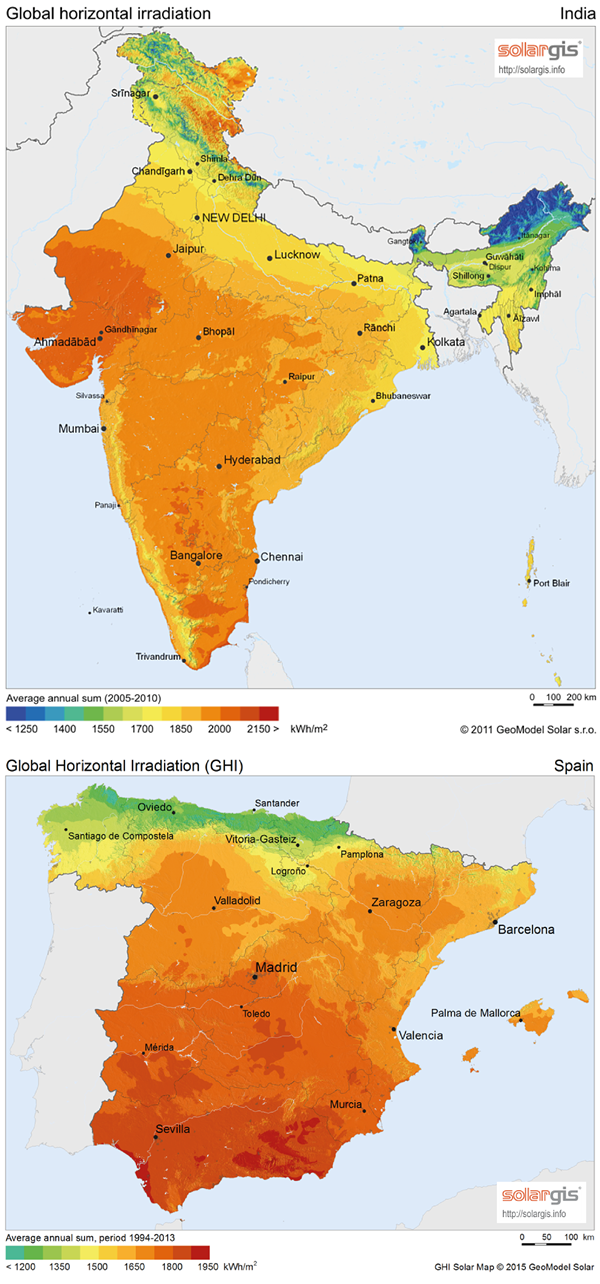
Comparison of annual average sunshine levels between India (period 2005-2010) and Spain (period 1994-2013) DNI Solar Map © 2016 Solargis
Agricultural irrigation with groundwater is one of the activities that involve a greater electricity consumption, as it implies, as we have seen, energy to pump water and to pressure the pipes. The economic and environmental cost is high: the most disadvantaged farmers also suffer fuel poverty, as they depend mainly on the purchase of fuel for the electric generators, a non-renewable source of energy that emits CO2, the gas that is mainly responsible for climate change.
Food security, empowerment and recovery of the soil
The installation of a solar-powered drip irrigation system provides farmers with important benefits:
- It increases the effectiveness of crops and therefore their profitability. Farmers can also extend the arable lands.
- The management of groundwater is improved. One of the risks of the use of solar pumps is that farmers can use more water than necessary, as they do not depend on the cost of the diesel generators. The implementation of drip irrigation avoids the waste of water and this can be managed much more precisely. The problem of over-exploitation of aquifers is therefore notably reduced.
- Farmers may diversify their crops. In Anantapur and Kurnool, the monoculture of peanuts implies a high vulnerability to pests and to the whims of monsoon rains, as any of these factors may trigger the sudden ruin of thousands of people, as it has happened in the last few decades. With the facilitation of the access to water and drip irrigation, the Vicente Ferrer Foundation has promoted the farming of fruits and vegetables, thus increasing food security and the level of income of farmers.
- The savings of water and the reduction of energy costs, along with other actions to recover aquifers, such as the building of small dams to collect rainwater and reforestation, increases the resilience of the community significantly: the independence from monsoons and from the price of fuel is increased, the erosion of the land is slowed down and the resources for a sustainable economic exploitation, both in stockbreeding and in aquaculture, are increased.
- The system appears as one of the pillars for the protection of the environment, the only way to ensure the long-term survival of an ecosystem, this being the key to the permanence in the land, the maintenance of the cultural roots and the gender balance.
This allows the achievement of one of the main goals of both foundations: to slow down the migration to large cities, where destitute farmers, mainly belonging to the lowest castes of the Indian society, end up crammed in unhealthy and unworthy places without an option to prosper.
Some projects as an example
The We Are Water Foundation collaborates since the beginning with the Vicente Ferrer Foundation in several projects with the aim of providing access to water and sanitation to the most disadvantaged in India. Each one of them is a roadmap to follow in order to solve specific problems.
Regarding the promotion of the solar-powered drip irrigation you may check the Installation of new solar-powered irrigation systems in Andhra Pradesh.
In the development of the access to water review the Construction of water infrastructures for collecting and using water, the Digging of wells in the B.K. Samudram region and the Digging of wells in Andra Pradesh.
The goals of creating infrastructures for the collection of rain water can be seen in the project Construction of a reservoir in Ganjikunta.


